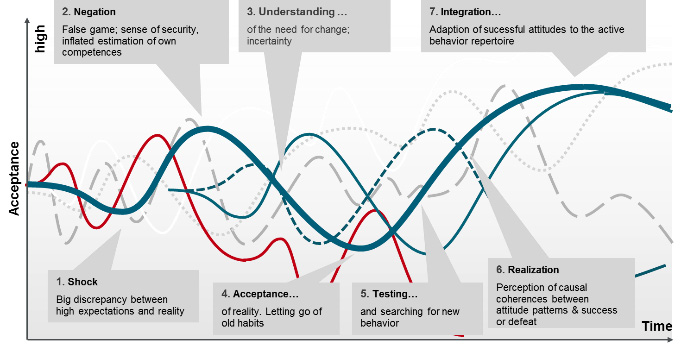Since large, medium-sized and small companies consist of many personalities, changes require attention regarding their sensitivities. Stakeholders know/understand/support/do/master unknown, new tasks not yet. The resulting resistance endangers the introduction of change. Management wants the acceptance and commitment of all parties concerned, but the communication of the leaders does not work. Eventually, the "soft" factors endanger the implementation. Change management and organizational development activities ensure that stakeholders participate constructively, that resistance decreases and that the mutual exchange of information works, so that those affected adopt better and faster the changes.
Culture shock
There's hardly a moment, when anything does not change. The intensity of the reaction of the people affected depends on the magnitude of the change. Otherwise, most of the following steps are performed:
- Shock
- Negation
- Understanding
- Acceptance
- Testing
- Realization
- Integration
Change management supports those affected to deal with their resistance and to get involved in the change.
The path of least resistance is the path of the loser.


